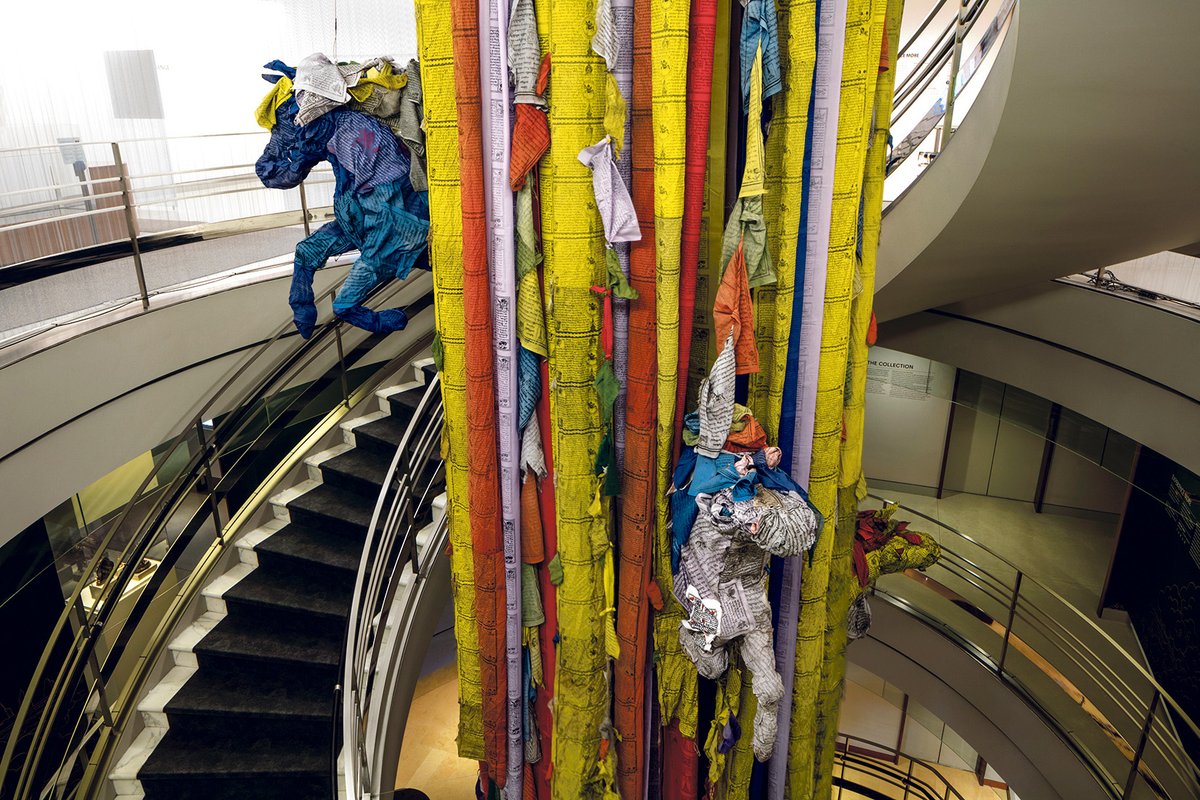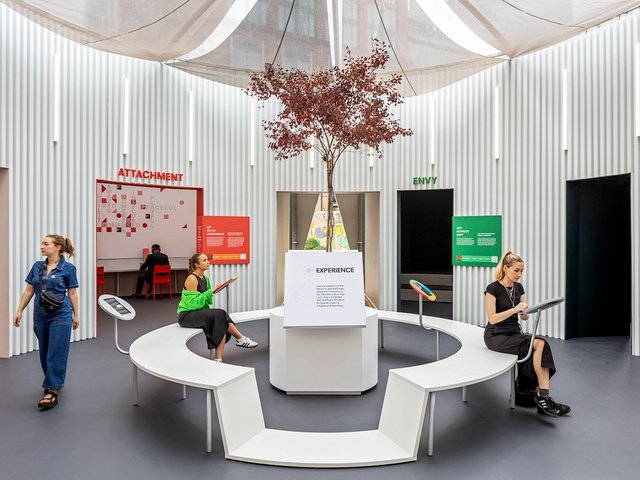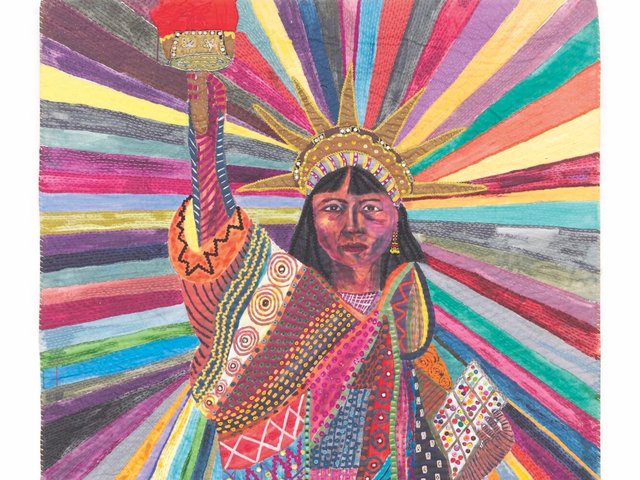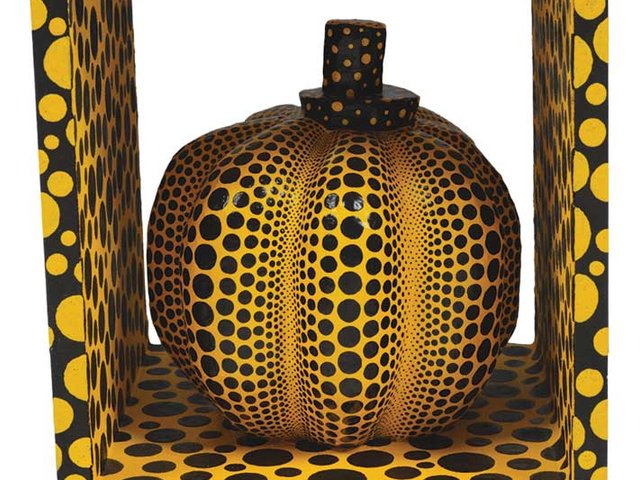The Rubin Museum’s last exhibition at its permanent space on West 17th Street brings in 32 contemporary artists’ works, each of which somehow relates to or is inspired by a piece in the museum’s permanent collection. For example, a beautiful and intricately painted wood-and-metal Tibetan prayer wheel from the 19th or 20th century is accompanied by the Nepalese artist Bidhata KC’s Out of Emptiness (2023), an interactive prayer wheel made of old tin cans—inspired by the vernacular prayer wheels she has seen in remote villages. Meanwhile, in front of the Rubin’s Tibetan Buddhist Shrine Room, the New York-based artist John Tsung has created Divine Generation (2024), a non-visual work that captures vibrations within the gallery spaces, which can be experienced by putting a hand on a carved-out piece of the building’s foundation, transforming the museum into a living being.
This farewell exhibition, which also marks the museum’s 20th anniversary, is interspersed across all six floors and is a joint curatorial effort between the Rubin’s curatorial director Michelle Bennett Simorella, the New York-based artist Tsewang Lhamo and Roshan Mishra, director of the museum Taragaon Next in Kathmandu, Nepal. This last curator is of particular note, given that he has been extremely vocal in calling for the restitution of works from museums—including the Rubin. In fact, it was through his restitution work that he came to be involved in this show.
“In 2021 Michelle came to the Kathmandu Triennial, which was when we first got connected,” Mishra tells The Art Newspaper. “We worked for one-and-a-half years putting this show together and, in the beginning, I was a little reluctant about my dual role” as both an active member of the Nepal Heritage Recovery Campaign (NHRC) and co-curator of an exhibition at the Rubin—which the NHRC compelled to return two works from its collection in 2022 that were found to have been looted. But Mishra says that he was convinced by how the Rubin was looking to foreground community voices and living artists with roots in the Himalayan region.
Creating visibility
“I know most of the contemporary artists in Nepal, and Nepali artists need visibility,” Mishra says, adding that the three curators worked closely together. “We discussed every aspect of the exhibition—from selecting artists to going through possible narratives and how to display everything,” he says.
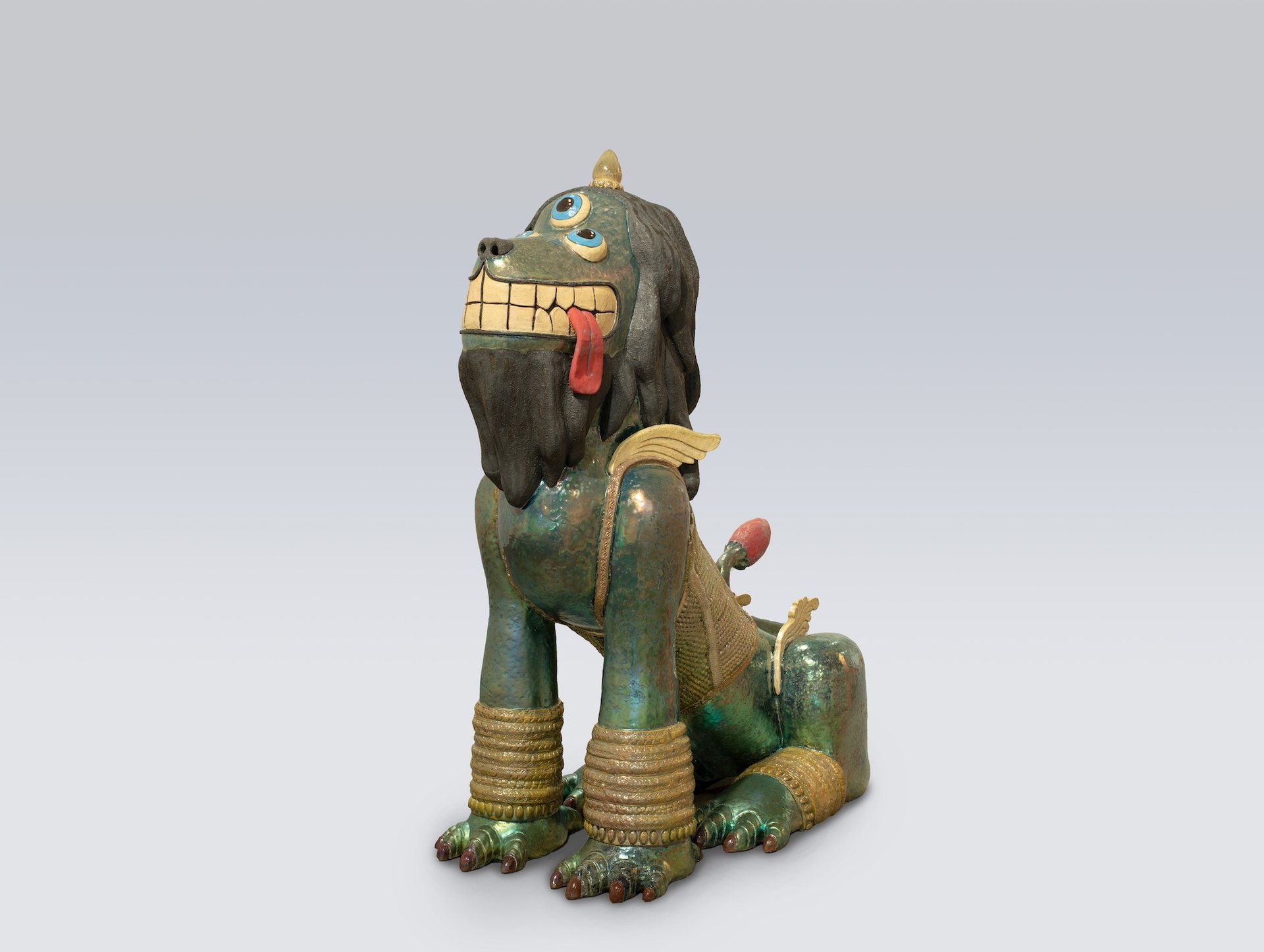
Shushank Shrestha, The Male Guardian Dog, 2023, ceramic, in-glaze lustre courtesy of the artist
One of Mishra’s favourite works on display is The Windhorse (lungta) (2024), a newly commissioned installation by the Bhutanese artist Asha Kama Wangdi that wraps around the central pillar of the museum. Five wind horses—mythical Tibetan creatures later adopted by Buddhism as symbols of wellbeing and good fortune that carry prayers from the Earth to the heavens—stick their heads dramatically out of a sea of old Tibetan prayer flags. “The whole idea of the wind horse and the artist’s use of discarded prayer flags creates a new narrative,” Mishra says, highlighting how the flags have become an ironic source of pollution in Nepal. As visitors ascend the Rubin’s central spiral staircase, they walk around The Windhorse. “Going up, you almost feel you’re going from the Earth to heaven,” Mishra says. “In a subtle way, the artist has created that feeling.” (He is excited to see how the work will be installed when Reimagine travels to Chicago’s Wrightwood 659 later this year.)
Mishra looks forward to other collaborative projects that combine his fervour for both cultural restitution and contemporary art in the Himalayan region. “The dual role is also an overlapping situation,” he says. “Without dialogue, these sensitive issues can’t be tackled.”
- Reimagine: Himalayan Art Now, The Rubin Museum of Art, until 6 October


